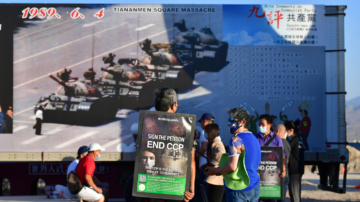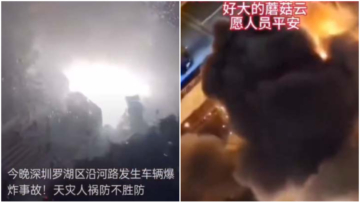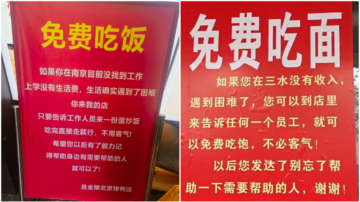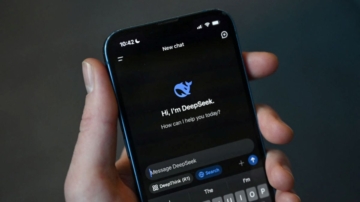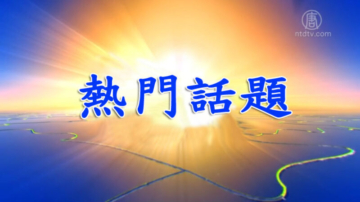【新唐人2011年12月7日訊】溫州動車特大事故調查報告遲遲不出,按照相關規定,報告最遲11月30號必須提出,但這一天,相關部門並沒有發出只字片語。據報導,事故調查結果難產,是因為高層對責任認定難以取捨,如果說是設備的問題,那麼對高鐵形象不利﹔說是管理的問題,那麼涉及的責任人又太多。
據規定,重大事故調查報告應在120天內公布,現在距離「7•23」甬溫線動車特大事故已經四個多月,調查報告仍然沒有對外公開。
當事故發生後,鐵道部原本已承認信號系統存在問題。7月28號,上海鐵路局局長安路生,他在溫州舉行的第一次事故調查全體會議上表示,「7•23 」動車事故是由於溫州南站信號設備在設計上存在嚴重缺陷,遭雷擊發生故障後,導致本應顯示為紅燈的區間信號機錯誤顯示為綠燈。
而負責設計信號設備的「北京通號院」也在網站上發佈道歉信,表示將「迅速做好整改工作」。
但是,國務院事故調查專家組副組長王夢恕11月20號接受《京華時報》採訪時透露,事故調查報告已在9月底完成並遞交,他說,「經過調查和實驗,動車信號技術和設備可以說沒有問題,最大的問題是人員和管理的問題」,他還說,「那麼好的設備交給他們(當地管理部門)沒有好好管理和使用,造成設備壞掉了。設備壞了之後,人工操作也出現問題。」
不過,王夢恕很快改口,表示那只是他個人的看法,不是調查報告內容。
那麼,動車事故發生的真正原因是甚麼?
大陸媒體指出,導致動車追尾事故發生的原因,既有信號設備軟件設計缺陷,也有調度指揮管裡的失誤。實際上,事故暴露出鐵路多個部門都存在問題。從信號設備提供商,到上海鐵路局調度所和溫州南站行車值班員的行車處理,以及電務部門的維修、登記等。
大陸作家荊楚:「反正是黨國專門搞豆腐渣這樣的事,高鐵是關係到信號、安全、管理方面的很多事情。他們﹙中共﹚沒辦法搞好,可以說整個高鐵系統、管理系統、信號系統、安全系統的管理非常難管的。」
而調查報告遲遲不出的原因,據接近調查組的人士透露,因為考慮了各方面的因素,導致報告出不來,因為說是設備的問題,對高鐵形象不利,影響高鐵出口﹔說是管理的問題,鐵路現任領導班子很多人的仕途都將受到影響。
中南大學城市軌道交通研究所退休教授王成立:「它﹙中共﹚往下找原因,又找不出來,所以就拖了這麼久。這個責任完全在上面,體制問題!根本問題是體制問題!中國不能對上面提意見,意見只能向下,這就是根本原因。出了問題都是下面的問題。」
另外,「中國北車股份有限公司」將54大列CRH380BL問題動車組召回整改後,11月16號重新分批投入運營。
民間專家追問,問題車到底進行了哪些整改,提供不合格配件從而導致故障的供應商承擔了怎樣的責任?有沒有追究﹖
新唐人記者代靜、周平、薛莉採訪報導。
China’s high-speed train Accident Report
The investigation report of high-speed train accident on the
Yongwen Line has not been released for quite some time now.
According to official policy, the report had to be released
no later than November 30.
But there was no word from any related government official
that day.
It’s reported that at high levels is hard to pin the responsibility
of a problem on anyone.
If they say it’s an equipment issue, then that will damage
the image of the China High Speed Railway.
If they say it’s a management issue, then many officials
will have to take the responsibility for the accident.
There’s an official policy in China that dictates that an investigation
report of a major accident must be released within 120 days.
However, more than four months have passed but the investigation
report of the Yongwen Line high-speed train accident hasn’t been released.
Just after the accident, China Ministry of Railways said that
there were issues with the signaling system.
On July 28 in Wenzhou City, An Lusheng, the director of
the Shanghai Railway Bureau said in the first investigation plenary,
that the signaling system in the Wenzhou Nan station had
serious flaws in its design, which led to the accident.
The passing signal turned from red to green
after a lightning strike.
The system designer, Beijing Railway Communication
& Signaling Design Institute published an apology letter on its website,
saying that it would “rectify the situation quickly.”
However, Wang Mengshu, the deputy head of the State
Department’s Accident Investigation Expert Team said
the report was finished and handed it in at the end of
September when he was interviewed by the Beijing Times on November 20.
He said, “During the investigation and testing stage,
the technology and the actual equipment of the signaling system didn’t have any problems.
The biggest issue is the staff and the management.”
He commented: “I gave the local management team
good equipment, but they didn’t use it or manage it properly.
After the system broke down, the manual operation
also had problems.”
However, soon after, Wang Mengshu changed his words quickly.
He said his statements were only his personal views,
which are not in the context of the investigation report.
So, what’s the real cause of the accident?
Local media pointed out that there were design flaws in the
signaling system and there were errors on the part of dispatching management team that caused the accident.
In fact, the accident exposed the fact that many departments
within the railway system have problems,
including the system supplier, dispatching center of the Shanghai Railway Bureau,
the operating coordinator in Wenzhou Nan station, and
the maintenance and registration departments of the
signaling section of the Shanghai Railway Bureau.
Jing Chu, a China writer: “Anyway, the Chinese Communist
Party (CCP) is engaged in such a rubbish project.
High-speed railway is related to signal, safety, management, etc.
Yet, the CCP doesn’t have the capability to do it well.
The whole high-speed railway system, which includes
the management, signal and safety sub-systems, are very difficult to manage.”
Resources close to the investigation committee said,
the reason why the investigation report has not been released for so long time is that there’s issues with the equipment.
This would damage the image of the China High Speed Railway
and would impact the exporting of the railway system.
If it comes to light that there’s management issues,
then many current leaders will have no political future.
Wang Chengli, the retired professor of the Urban Transit Institute
of Central South University: “The CCP tried to find a reason for the accident at the lower levels but failed.
That’s the reason why it is taking so long
to wind up the investigation.
In fact, the responsibility for the accident lies at high levels in the CCP,
it’s an institutional issue! Fundamentally it’s the institutional issue!
In China, comments can’t be made by lower level officials,
the leader always comment on lower levels, which is the root cause.
Whenever there’s an issue, it’s always a problem at the lower levels.”
In addition, the China CNR Corporation Limited recalled
54 CRH380BL High-speed trains for repair.
And those High-speed trains were put back into operation
on November 16.
Civilian experts questioned what type of repairs were made
to the High-speed trains and
what was the responsibility of the suppliers who supplied the
unqualified parts, and how were they penalized.
NTD Reporters: Dai Jing, Zhou Ping and Xue Li
據規定,重大事故調查報告應在120天內公布,現在距離「7•23」甬溫線動車特大事故已經四個多月,調查報告仍然沒有對外公開。
當事故發生後,鐵道部原本已承認信號系統存在問題。7月28號,上海鐵路局局長安路生,他在溫州舉行的第一次事故調查全體會議上表示,「7•23 」動車事故是由於溫州南站信號設備在設計上存在嚴重缺陷,遭雷擊發生故障後,導致本應顯示為紅燈的區間信號機錯誤顯示為綠燈。
而負責設計信號設備的「北京通號院」也在網站上發佈道歉信,表示將「迅速做好整改工作」。
但是,國務院事故調查專家組副組長王夢恕11月20號接受《京華時報》採訪時透露,事故調查報告已在9月底完成並遞交,他說,「經過調查和實驗,動車信號技術和設備可以說沒有問題,最大的問題是人員和管理的問題」,他還說,「那麼好的設備交給他們(當地管理部門)沒有好好管理和使用,造成設備壞掉了。設備壞了之後,人工操作也出現問題。」
不過,王夢恕很快改口,表示那只是他個人的看法,不是調查報告內容。
那麼,動車事故發生的真正原因是甚麼?
大陸媒體指出,導致動車追尾事故發生的原因,既有信號設備軟件設計缺陷,也有調度指揮管裡的失誤。實際上,事故暴露出鐵路多個部門都存在問題。從信號設備提供商,到上海鐵路局調度所和溫州南站行車值班員的行車處理,以及電務部門的維修、登記等。
大陸作家荊楚:「反正是黨國專門搞豆腐渣這樣的事,高鐵是關係到信號、安全、管理方面的很多事情。他們﹙中共﹚沒辦法搞好,可以說整個高鐵系統、管理系統、信號系統、安全系統的管理非常難管的。」
而調查報告遲遲不出的原因,據接近調查組的人士透露,因為考慮了各方面的因素,導致報告出不來,因為說是設備的問題,對高鐵形象不利,影響高鐵出口﹔說是管理的問題,鐵路現任領導班子很多人的仕途都將受到影響。
中南大學城市軌道交通研究所退休教授王成立:「它﹙中共﹚往下找原因,又找不出來,所以就拖了這麼久。這個責任完全在上面,體制問題!根本問題是體制問題!中國不能對上面提意見,意見只能向下,這就是根本原因。出了問題都是下面的問題。」
另外,「中國北車股份有限公司」將54大列CRH380BL問題動車組召回整改後,11月16號重新分批投入運營。
民間專家追問,問題車到底進行了哪些整改,提供不合格配件從而導致故障的供應商承擔了怎樣的責任?有沒有追究﹖
新唐人記者代靜、周平、薛莉採訪報導。
China’s high-speed train Accident Report
The investigation report of high-speed train accident on the
Yongwen Line has not been released for quite some time now.
According to official policy, the report had to be released
no later than November 30.
But there was no word from any related government official
that day.
It’s reported that at high levels is hard to pin the responsibility
of a problem on anyone.
If they say it’s an equipment issue, then that will damage
the image of the China High Speed Railway.
If they say it’s a management issue, then many officials
will have to take the responsibility for the accident.
There’s an official policy in China that dictates that an investigation
report of a major accident must be released within 120 days.
However, more than four months have passed but the investigation
report of the Yongwen Line high-speed train accident hasn’t been released.
Just after the accident, China Ministry of Railways said that
there were issues with the signaling system.
On July 28 in Wenzhou City, An Lusheng, the director of
the Shanghai Railway Bureau said in the first investigation plenary,
that the signaling system in the Wenzhou Nan station had
serious flaws in its design, which led to the accident.
The passing signal turned from red to green
after a lightning strike.
The system designer, Beijing Railway Communication
& Signaling Design Institute published an apology letter on its website,
saying that it would “rectify the situation quickly.”
However, Wang Mengshu, the deputy head of the State
Department’s Accident Investigation Expert Team said
the report was finished and handed it in at the end of
September when he was interviewed by the Beijing Times on November 20.
He said, “During the investigation and testing stage,
the technology and the actual equipment of the signaling system didn’t have any problems.
The biggest issue is the staff and the management.”
He commented: “I gave the local management team
good equipment, but they didn’t use it or manage it properly.
After the system broke down, the manual operation
also had problems.”
However, soon after, Wang Mengshu changed his words quickly.
He said his statements were only his personal views,
which are not in the context of the investigation report.
So, what’s the real cause of the accident?
Local media pointed out that there were design flaws in the
signaling system and there were errors on the part of dispatching management team that caused the accident.
In fact, the accident exposed the fact that many departments
within the railway system have problems,
including the system supplier, dispatching center of the Shanghai Railway Bureau,
the operating coordinator in Wenzhou Nan station, and
the maintenance and registration departments of the
signaling section of the Shanghai Railway Bureau.
Jing Chu, a China writer: “Anyway, the Chinese Communist
Party (CCP) is engaged in such a rubbish project.
High-speed railway is related to signal, safety, management, etc.
Yet, the CCP doesn’t have the capability to do it well.
The whole high-speed railway system, which includes
the management, signal and safety sub-systems, are very difficult to manage.”
Resources close to the investigation committee said,
the reason why the investigation report has not been released for so long time is that there’s issues with the equipment.
This would damage the image of the China High Speed Railway
and would impact the exporting of the railway system.
If it comes to light that there’s management issues,
then many current leaders will have no political future.
Wang Chengli, the retired professor of the Urban Transit Institute
of Central South University: “The CCP tried to find a reason for the accident at the lower levels but failed.
That’s the reason why it is taking so long
to wind up the investigation.
In fact, the responsibility for the accident lies at high levels in the CCP,
it’s an institutional issue! Fundamentally it’s the institutional issue!
In China, comments can’t be made by lower level officials,
the leader always comment on lower levels, which is the root cause.
Whenever there’s an issue, it’s always a problem at the lower levels.”
In addition, the China CNR Corporation Limited recalled
54 CRH380BL High-speed trains for repair.
And those High-speed trains were put back into operation
on November 16.
Civilian experts questioned what type of repairs were made
to the High-speed trains and
what was the responsibility of the suppliers who supplied the
unqualified parts, and how were they penalized.
NTD Reporters: Dai Jing, Zhou Ping and Xue Li


